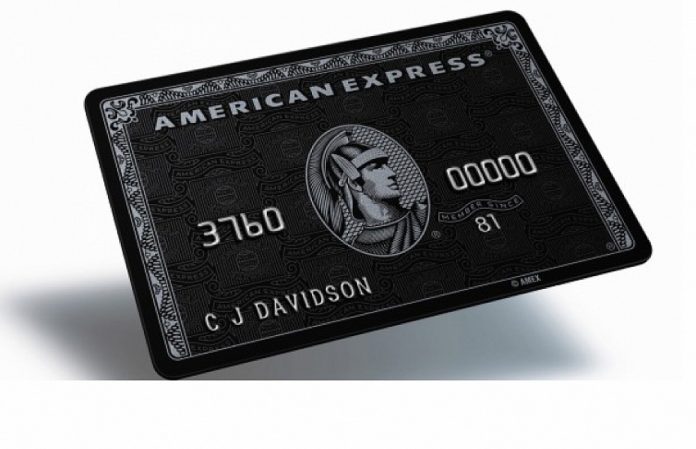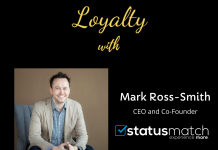
Hacking American Express? Wait, what?
Banks and card providers like American Express are increasingly becoming more reliant on predictive analytics, merchant and transactional data to help drive new revenue. In fact, most banks, including American Express, will aggregate their big data insights, and sell this data back out to corporations and governments as business intelligence.
The power of the banking data comes from you – the cardholder. All those special offers and discounts you’re given are no mistake – they are designed to influence your spending behaviour, and ensure that Amex is the card you use every time on all transactions.
When you swipe that card, millions of calculations are taking place in the background to try and understand why you make the purchase, and where you’re likely (or not likely) to make your next purchase. This intelligence is then used to target specialty curated offers back at you.
Your profile is essentially then put into a box – a customer segment. Armed with the tips below, you too can begin hacking American Express system to your advantage.
You are then tagged as a particular type of customer, and being tagged as the right, or the wrong type of customer can be a big deal. Your profile may be flagged as a high-net-worth individual, a business customer, a high-risk customer, or one of the hundreds of other segments.
Being in the right customer segment can have significant benefits, such as annual fee waivers, bonus points, a constant stream of gifts, invites to VIP events, additional credit lines and even an invitation to the famous Amex Centurion Black Card.
How can you hack the system to get these offers?
Firstly, it’s important to understand how the system works, what the banks look for in spending patterns, in transactional data, and what other data feeds are used to build out your customer profile.
Here are 5 tips to get you started:
1. Spend the right type of money
Spending $500 at your local grocery store is not the same as spending $500 at Gucci. While the net gain to Amex may be similar for both transactions, by selectively spending at luxury and high-end merchants, you’re educating Amex that you have money to burn, and enjoy the finer things in life. This is the money you own and control.
Similarly, if you put through business transactions on your card – Amex knows what these transactions are, and while the amounts may be high – the chances it’s you personally paying for it is low as it’s likely a company expense. This is the money you control, but don’t own.
2. Pay your taxes on credit card
Did you recently make a large purchase which requires taxes to be paid? Or do you have an unusually large income tax bill? Put it on your card! Amex knows the merchant is the tax office, and can easily work backward to get a ballpark idea of your assessable income.
You could even offer to pay your partner/friends taxes using your card, and Amex will think your income is much greater than it actually is!
3. Spend in the same areas as high net worth individuals
This is an important point. High net worth individuals tend to eat, travel and spend money in the same locations, even if they don’t know each other. From a data science perspective, this is known as clustering and physical networks. So even though you might not know other people in the same area, because you are displaying similar actions to them (spend), you are thought to be connected in their cluster by an association of similar traits.
Some hacks I’ve seen to achieve this include: –
– Having your Toyota serviced by BMW
– If a customer is paying cash, offer to put it on your card and they reimburse you
– Purchase an item from a high-end store, and have it refunded to a different credit card
4. Travel, a lot.
Let me tell you a story about how I came across this golden nugget. My wife frequently travels as part of her job, and her company picks up the tab for flights and accommodation.
I wanted American Express to think I was travelling a great deal more than I actually was – so I took two actions to set this ball in motion
a) Told my wife to spend at a high-end coffee shop in every city she visits. These activities are training American Express that I’m an ultra-frequent flyer. But wait – where is the flight spend? Clearly, it’s on another credit card, and Amex is missing out on the spend, right? 🙂
b) Use VPN to check my balance on the mobile app. I’ll use a VPN located in the country which my recent coffee shop transaction took place to keep the illusion that I’m in that country. Occasionally, I’ll switch the VPN to a location which has no spend, just to maintain the facade.
5. Be selective how you interact with email
Every time you open an email from Amex (and indeed most providers), a cocktail of information is being sent back to their servers, including: –
– Your IP address and where in the world you are opening the email from
– Your PC/Tablet/Phone type and model
– Any links you click, how often, and how many additional pages you click through
– If you forward the email on to a friend or colleague
– If you open emails from home, work, or on the go
– Other cardholders who are using the same IP address as you (for example, you might work in the same office)
These data points can help paint a picture of where you live, work, travel to, and the propensity of you engaging in an offer. Airline loyalty programs are already using this data to drive revenues.
If you get it right – you’ll start receiving monthly gifts, invitation and a host of other exclusive deals which are reserved for Amex’s best customers.

























